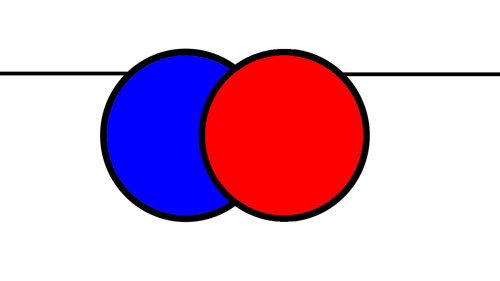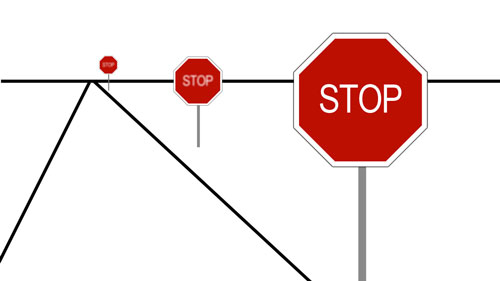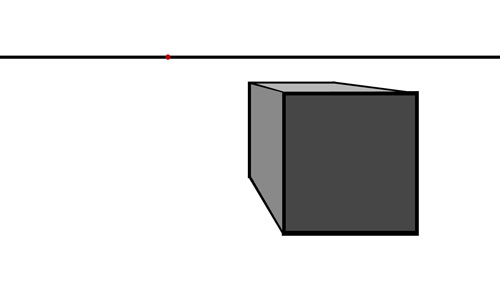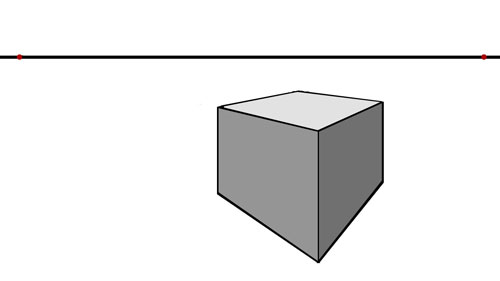 by Matt Fussell
by Matt FussellSpace is one of the most essential and versatile elements of art. It refers to the area within, around, and between objects, and it plays a vital role in how we perceive depth, distance, and relationships in a work of art. While space can sometimes seem abstract or intangible, it profoundly affects the overall composition, mood, and clarity of an artwork. Mastering space allows artists to create convincing illusions of three-dimensional reality on a two-dimensional surface, organize their visual ideas effectively, and communicate more powerfully with viewers.
At its most basic level, space can be positive or negative. Positive space is the area occupied by the subjects or objects in an artwork. Negative space, on the other hand, is the empty or open area surrounding those subjects. Though it may seem secondary, negative space is crucial for defining shapes, improving clarity, and creating balance. Artists who learn to observe and use negative space intentionally often find that their drawing accuracy improves dramatically. The relationship between positive and negative space establishes structure and prevents compositions from feeling cluttered or confusing.
Beyond positive and negative space, artists also use deep space and shallow space to create varying impressions of distance and dimensionality. Deep space suggests that there is a long distance between the foreground and background. It is commonly used in landscapes, cityscapes, and scenes with a strong sense of depth. Shallow space, by contrast, compresses the distance between subjects and can create an intimate, flat, or decorative effect. Traditional Japanese prints, for example, often make use of shallow space to create stylized compositions that prioritize pattern and design over realistic depth.
One of the most important tools artists use to manipulate space is perspective. Linear perspective, developed during the Renaissance, relies on the concept of a horizon line and vanishing points to create the illusion of three-dimensionality. Parallel lines converge toward these vanishing points, mimicking how objects appear smaller as they recede into the distance. One-point, two-point, and three-point perspective systems allow artists to place objects accurately within a spatial environment, giving drawings a sense of realism and structure.
In addition to linear perspective, atmospheric (or aerial) perspective also helps artists convey space. Rather than relying on lines, atmospheric perspective uses shifts in value, contrast, and detail to suggest depth. Objects farther away appear lighter, less detailed, and sometimes cooler in color, while foreground objects are darker, sharper, and warmer. This technique mirrors the way moisture and particles in the air scatter light, causing distant objects in nature to appear slightly hazy. Atmospheric perspective is especially effective in landscapes, but it can be applied in any scene where depth needs to be subtly communicated.
Another way artists indicate space is through overlapping, one of the simplest and most intuitive spatial techniques. When one form overlaps another, the viewer naturally perceives the front object as closer. This method requires no complex rules or mathematical systems, yet it remains one of the most powerful ways to show depth. Similarly, placement on the picture plane affects space: objects placed lower typically appear closer, while those placed higher seem farther away. These simple cues help guide the viewer’s eye and establish order within the composition.
Scale and proportion further enhance the illusion of space. By making objects that are intended to appear distant smaller and those meant to be close larger, artists simulate real-world spatial relationships. This technique, used in combination with perspective and overlapping, allows for highly convincing depictions of space.
In composition, space contributes to rhythm, balance, and harmony. The distribution of positive and negative space influences how comfortably the viewer’s eye moves through the artwork. Skilled artists use space to emphasize focal points, create visual breathing room, and control how information is presented. In this way, space becomes not just a backdrop for objects but an active element that shapes the artwork’s overall impact.
Ultimately, space is more than an element—it is the stage upon which all other elements of art interact. By understanding and controlling space, artists can create convincing depth, powerful compositions, and expressive visual worlds. Whether aiming for realism or abstraction, the thoughtful use of space elevates artwork, enhances clarity, and deepens the viewer’s connection to the piece.
In terms of art, space is the area around, above, and within an object. With consideration to drawings and paintings, our goal is to create the illusion of space.
Many new artists overlook the importance of creating space in a drawing or painting. The result usually looks flat or objects can appear to be floating. Luckily, however, creating space in an artwork is very simple to accomplish and there are a number of ways to it.
There are six ways an artist can create the illusion of space on a 2-Dimensional surface.
Overlapping - occurs when objects that are closer to the viewer prevent the view of objects that are behind them.

Placement on the paper - Objects placed higher within the picture plane will appear further away.

Size - Objects that are smaller will appear further away from the viewer.

Detail - Objects that are further away should have less detail than objects that are closer to the viewer.

Color and Value - Objects that are further away are cooler in color temperature, while objects that are closer are warmer. Objects that are further away are lighter in value, while objects that are closer are typically darker in value.

Perspective - Linear perspective is a drawing method that uses lines to create the illusion of space on a flat surface. There are three types of linear perspective. Two are displayed on this page.
One point perspective uses one vanishing point to accomplish this illusion.

Two point perspective uses two vanishing points to create the illusion of space.
Terms
Space - element of art, refers to the emptiness or area between, around, above, below, or within objects
Positive Space - the shapes or forms of interest
Negative Space - the empty space between the shapes or forms
3-D Space can be defined as the space over, under, through, behind, and around a form. Architecture, sculpture, weaving, ceramics, and jewelry are three-dimensional art forms
2-D space can best be described as an illusion. We perceive depth by creating an illusion of 3-D space on a 2-D surface.
Point of view - refers to the angle at which you view an object.
Illusion of form - is manifested by creating an image with a range of value. By accurately placing highlights and shadows an artist can create the illusion of form.
Chiaroscuro - An Italian word that means the arrangement of light and shadow. Today chiaroscuro is also called modeling or shading.
Illusion of depth - is manifested through the use of several factors:
Perspective - a graphic system that creates the illusion of depth and volume on a two-dimensional surface.
Overlapping - when one object covers part of a second object, the first seems to be closer to the viewer.
Size - Larger objects appear to be closer to the viewer than smaller objects
Placement - Objects placed low on the picture plane seem to be closer to the viewer than objects placed near eye level
Detail - objects with clear, sharp edges and visible details seem to be close to the viewer. Objects that are less detailed seem further away
Color - Brightly colored objects seem closer to you, and objects with dull, light colors seem to be further away